Growing Horse Chestnut Trees from Seed: Essential Tips
How to plant a horse chestnut tree from seed - A Beginner's Guide
Horse chestnut trees are beloved for their beautiful blooms, abundant shade, and tasty nuts. If you're interested in growing your tree, planting it from seed is a cost-effective and rewarding option. However, it's essential to care for your seedling properly to ensure that it grows into a healthy and mature tree. In this guide, The Rike will walk you through how to plant a horse chestnut tree from seed and provide tips for caring for your seedling to ensure its long-term health and beauty.
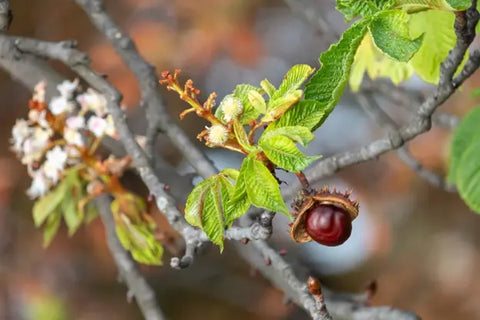 plant a horse chestnut tree from seed - A Beginner's Guide">
plant a horse chestnut tree from seed - A Beginner's Guide">
How to plant a horse chestnut tree from seed -A Beginner's Guide
1. How to plant a horse chestnut tree from seed
2. How to care for a horse chestnut seedling
3. Finally,
1. How to plant a horse chestnut tree from seed
Planting horse chestnut tree from seed is a great way to grow a beautiful and unique tree in your garden or landscape. However, it's important to follow the proper steps and guidelines to ensure that your tree has the best chance of success. Here is a more detailed step-by-step guide to planting a chestnut tree from seed:
1.1 Collect seeds
The first step is to collect chestnut seeds for planting. You can do this in the autumn, when the seeds have fallen from the tree and have a hard, shiny brown outer shell. Look for seeds that are intact and healthy-looking, as damaged or diseased seeds are less likely to germinate.
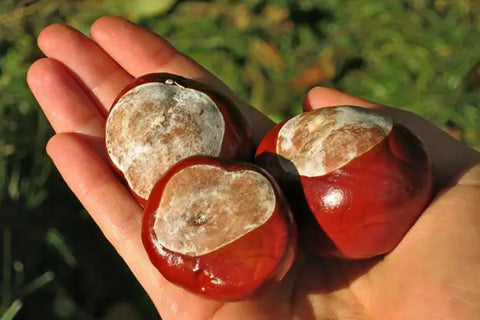
1.2 Soak the seeds
Once you have collected your horse chestnut tree seeds, so it's a good idea to soak them in water for 24 hours. This helps to soften the outer shell and improve the chances of germination.
1.3 Prepare the planting location
Select a planting location with plenty of sunlight and well-drained soil. Clear the area of any weeds or other plants that could compete with the young horse chestnut tree for nutrients. It's essential to choose a location that is sheltered from strong winds and frost, as these conditions can damage the young tree and inhibit its growth.
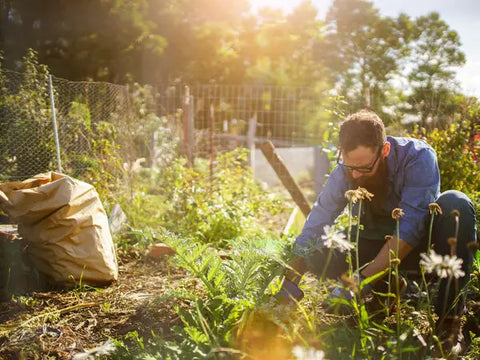
1.4 Amend the soil
It's also a good idea to amend the soil with compost or other organic matter before planting a horse chestnut tree from seed, as this can help improve soil fertility and drainage. Chestnut seeds for planting prefer well-drained, slightly acidic soil, with a pH between 5.5 and 6.5. If your soil is too alkaline, you can add organic matter such as compost or peat moss to help lower the pH.
It's also important to avoid planting these seeds in areas that are prone to flooding, as waterlogged soil can lead to root rot and other issues.
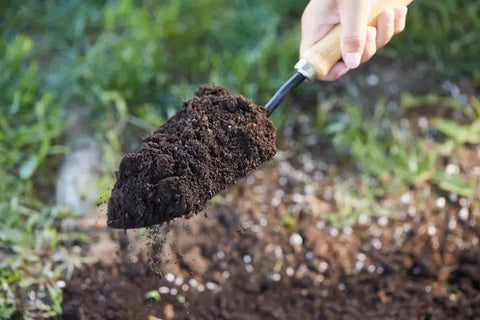
1.5 Plant the seeds
It's time to plant a horse chestnut tree from seed after they've been soaked. Dig a hole that is about 2-3 inches deep in the prepared soil, with the pointed end of the seed facing downwards. Water the area well and cover the seeds with a layer of mulch to help retain moisture and protect them from the elements.
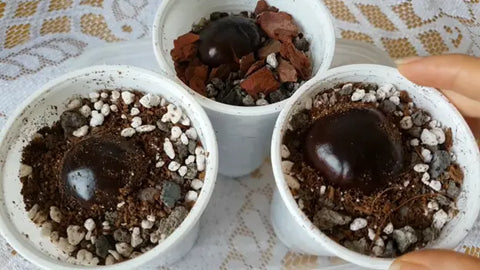
1.6 Maintain moisture
During the germination process, it's important to keep the soil consistently moist, but not waterlogged. This can take anywhere from several weeks to several months, so be patient and keep an eye on the soil moisture levels. Water the area deeply but infrequently, allowing the soil to dry out slightly between waterings.
1.7 Watch for emergence
Once horse chestnut tree seedling has emerged from the soil, continue to water it regularly and provide it with plenty of sunlight. As the tree grows, it may need to be staked or supported to prevent it from bending or breaking in strong winds.
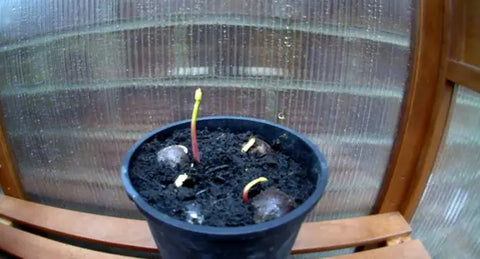
Overall planting a horse chestnut seed can be a rewarding and enjoyable experience. By following these step-by-step guidelines, you can give your tree the best chance of success and enjoy the beauty and benefits of this healthy and thriving tree for many years to come.
If you'd like to know what to do with horse chestnut seed oil , check it out here!
2. How to care for a horse chestnut tree seedling
Caring for a horse chestnut seedling is essential for ensuring that it grows into a healthy and mature tree. Here are some essential tips:
1. Watering: Water the seedling regularly to keep the soil consistently moist. In contrast, overwatering can lead to root rot. During the first year, you may need to water the seedling once or twice a week, depending on the weather and soil conditions.
2. Fertilization: Fertilize the seedling with a slow-release fertilizer in the early spring of each year. This will provide the tree with the necessary nutrients to grow healthy and strong. Be careful not to over-fertilize as this can burn the roots of the seedling.
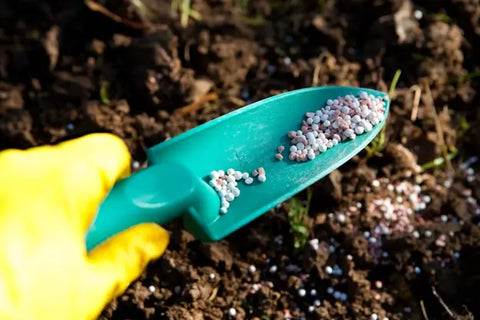
3. Mulching: Mulch around the base of the seedling to help retain moisture and prevent weeds from growing. Use a layer of organic mulch, such as shredded leaves or bark, and spread it around the base of the tree to a depth of about 2-3 inches.
4. Pruning: Horse chestnut tree seedlings may require annual pruning during the dormant season to remove dead, diseased, or damaged branches, and to shape the tree by selectively pruning to promote a central leader and well-spaced lateral branches. Avoid pruning too much at one time as this can stress the tree.
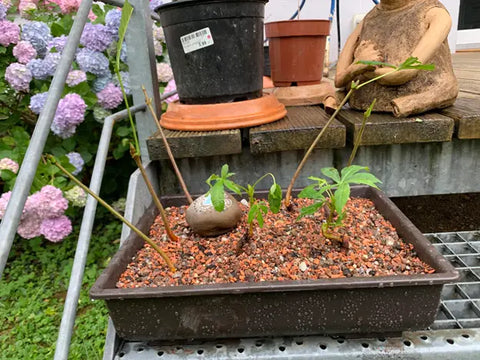
5. Pest control: Keep an eye out for pests and diseases that may affect the seedling. Aphids and spider mites are common pests, and powdery mildew and leaf spot are common diseases. Use an organic pest control solution or consult with a professional arborist if necessary.
6. Support: As the seedling grows taller, it may need support to prevent it from bending or breaking in strong winds. Use a stake or support system to keep the tree upright and stable.
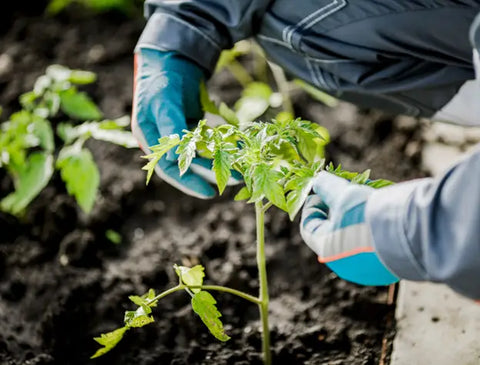
By following these tips, you can ensure that your horse chestnut seedling grows into a healthy and beautiful tree.
3. Finally,
Planting this kind of tree can be a rewarding and cost-effective way to add beauty, shade, and even tasty nuts to your garden or landscape. By following the step-by-step guide for how to plant a horse chestnut tree from seed, you can ensure that it grows into a healthy and majestic tree that will bring you joy and satisfaction for many years to come. With the right care and attention, your tree will thrive and become a cherished part of your outdoor space.
If you're searching for high-quality tree seeds, including horse chestnut seeds, The Rike brand is a recommended option. The Rike is a company that specializes in selling high-quality tree seeds. We offer a variety of tree seeds that are harvested from healthy and mature trees to ensure the highest germination rates.
FAQs about Horse Chestnut Tree
1. Why should horse chestnuts not be consumed by people or livestock?
Horse chestnuts should not be consumed by people or livestock because they are not edible and contain toxins that are harmful to humans.
2. How can horse chestnut bonsai trees be grown?
To grow horse chestnut bonsai trees successfully, beginners can start with native trees, such as the horse chestnut, which can transform into beautiful bonsai without the need for expensive specimens. By following proper techniques and guidelines, individuals can learn how to cultivate and care for a horse chestnut bonsai effectively.
3. What precautions should be taken regarding the edibility of horse chestnuts?
It is important to exercise caution when it comes to the edibility of horse chestnuts. Unlike other chestnuts, horse chestnuts are not safe for human consumption and can be poisonous if ingested. Therefore, it is crucial to avoid eating horse chestnuts and to be aware of their potential toxicity to humans.
4. What environmental factors should be considered when selecting a planting location for horse chestnuts?
It is essential to choose a location sheltered from strong winds and frost to prevent damage to the young tree and inhibit its growth.
Understanding the Baumann Horse Chestnut
The Baumann horse chestnut is a stunning ornamental tree, known for its showy clusters of white flowers and impressive summer foliage. Unlike its famous counterpart, the common horse chestnut, the Baumann variety is sterile, meaning it doesn't produce the familiar spiky fruits. This makes it an excellent choice for those who desire the beauty without the litter.
Characteristics of the Baumann Horse Chestnut
- Height and Spread: This majestic tree can reach heights of up to 50 feet, with a sprawling canopy that provides ample shade.
- Flowers: Renowned for its multi-layered, double flowers that bloom in late spring, these blossoms are not only beautiful but also attract pollinators.
- Foliage: Its lush green leaves transform into a golden hue in the fall, adding seasonal interest to any landscape.
Caring for Your Baumann Horse Chestnut
To ensure your Baumann horse chestnut thrives, follow these care tips:
-
Location: Plant it in a sunny or partially shaded area. It prefers well-drained soil but can tolerate various soil types.
-
Watering: Regular watering is essential, especially during dry spells. Ensure the soil remains moist but not waterlogged.
-
Pruning: Minimal pruning is required. Focus on removing dead or diseased branches to maintain its health and shape.
-
Fertilization: Apply a balanced, slow-release fertilizer in spring to promote robust growth and vibrant blooms.
-
Pest and Disease Management: While generally resilient, watch for common issues such as leaf blotch and scale insects. Employ appropriate treatments as needed.
Final Thoughts
With its captivating features and manageable care routine, the Baumann horse chestnut is an ideal addition to any landscape. Whether you’re looking to enhance your garden's aesthetic or provide a cooling canopy, this tree stands as a remarkable choice.
Can Horse Chestnut Trees Survive in Containers, and What Are the Considerations for Potted Care?
Horse chestnut trees can indeed be cultivated in containers, although this setup is generally suitable only for the initial stages of growth. If you're considering this approach, it's important to understand the unique challenges and requirements involved in potted care for these trees.
Initial Growth Stages
-
Suitability: Horse chestnuts can thrive in pots during their early development. This arrangement allows you to nurture the tree under controlled conditions before eventually transplanting it outdoors.
-
Container Requirements: Use deep and wide pots to accommodate the growing roots. Choose containers made of durable materials such as ceramic or plastic to maintain soil moisture and provide stability.
Care Considerations
-
Soil Quality: Opt for a well-draining potting mix. Combining standard potting soil with perlite or sand can prevent waterlogging, which is crucial for the tree’s health.
-
Watering Strategy: Maintain consistent moisture levels without overwatering. Ensure drainage holes are present in the pot to prevent water buildup.
-
Sunlight Exposure: Place the container in a location where the tree receives plenty of sunlight. Aim for a spot that gets at least six hours of sunlight daily to foster healthy growth.
Long-Term Viability
-
Growth Limitations: As horse chestnut trees grow, their root systems can become constrained by the limited space in a container, which stunts growth and impacts health.
-
Transplanting Needs: If you wish for your horse chestnut to achieve full maturity, plan to transplant it into the ground after a few years. Doing so ensures additional room for the roots to expand and thrive.
In essence, while cultivating horse chestnut trees in containers is feasible, it is ideal only as a temporary arrangement. Regular monitoring, suitable care, and eventual transplantation are key to fostering a healthy, robust tree.
Tips for Growing Japanese Horse Chestnut Trees
The Japanese horse chestnut, or Turbinata chestnut, is an impressive choice for a shade tree. Here's how to grow and care for this magnificent tree:
1. Choosing the Right Location
- Sunlight: Ensure your tree receives full sun to partial shade for optimal growth.
- Space: These trees can grow quite large, so provide ample space for their expansive canopy.
2. Soil and Planting
- Soil Type: They thrive in well-drained soil. Aim for a loamy texture that's rich in organic matter.
- pH Level: Slightly acidic to neutral pH levels are ideal.
- Planting Time: Early spring or fall is the best time to plant, as the tree establishes roots before extreme temperatures set in.
3. Watering Needs
- Consistency: Maintain regular watering, especially during dry spells. However, ensure the soil is not waterlogged.
- Mulching: Apply a layer of mulch around the base to conserve moisture and regulate soil temperature.
4. Fertilization
- Annual Feeding: Use a balanced fertilizer in early spring to support its growth and health.
- Nitrogen-Rich Options: Consider fertilizers with higher nitrogen content for lush foliage.
5. Pruning
- Time: Late winter to early spring is ideal for pruning.
- Technique: Remove dead or diseased branches and shape the tree to maintain a balanced structure.
6. Pest and Disease Management
- Common Issues: Watch for leaf spots and caterpillars.
- Control Measures: Use insecticidal soap or neem oil for pest control and ensure good air circulation to prevent fungal problems.
By following these care tips, your Japanese horse chestnut tree will grow into a healthy, beautiful addition to your landscape, offering shade and visual appeal for years to come.
Buckeyes vs. Horse Chestnuts: Are They the Same?
Buckeyes and horse chestnuts often cause confusion due to their similarities, but they are not identical. Both belong to the Aesculus family, yet distinct features set them apart.
Key Differences Explained
-
Leaf Structure:
Buckeyes typically have smaller, more finely-toothed leaflets compared to horse chestnuts. This subtle difference in the foliage can help you identify each tree. -
Fruit Appearance:
The fruit of a buckeye tree is generally smooth and shiny, with a smoother, leathery husk, while horse chestnut fruits are larger with a spiky outer shell. -
Size and Shape:
Horse chestnuts often grow taller and sturdier, with a more rounded canopy, whereas buckeyes tend to be smaller with a more informal shape.
Both trees bear seeds that look similar to one another, but their differences are clear when you know what to look for.
Additional Tips
-
Habitat:
Buckeyes primarily thrive in native North American environments, whereas horse chestnuts are more commonly found in Europe and parts of Asia. -
Uses:
While both trees are often used for ornamental purposes, understanding their unique traits can guide landscapers and gardeners in choosing which tree to plant for their specific needs.
Learning these characteristics will help you distinguish these closely related species, enhancing your appreciation for their unique beauty and diversity.
Uses and Characteristics of Horse Chestnut Wood in Woodworking
Horse chestnut wood, despite being less commonly used due to its relatively weak strength and poor resistance to rot, offers unique advantages in the world of woodworking. Its creamy color makes it an appealing option for certain specialty projects where aesthetics are prioritized over durability.
Characteristics of Horse Chestnut Wood
- Color and Grain: The wood features a creamy, smooth appearance that can add a unique appeal to a finished product.
- Workability: It is relatively easy to work with, making it suitable for intricate carving and turning tasks.
- Texture: The wood is fine-grained, which can yield smooth finishes when properly processed.
Common Uses
-
Woodturning: Ideal for crafting small, decorative items like bowls, vases, and ornamental pieces, taking advantage of its attractive appearance.
-
Furniture Components: Occasionally used in non-structural elements of furniture, such as accents or inlays, where its visual qualities can enhance the overall design.
-
Craft Projects: Due to its softness and ease of use, it's a favorite among hobbyists for making custom, handcrafted items like picture frames and small sculptures.
While not suitable for all applications, horse chestnut wood can be an excellent choice for projects where visual beauty outweighs the need for strength and resilience.
Caring for a horse chestnut seedling is essential for ensuring that it grows into a healthy and mature tree. Here are some essential tips:
1. Watering: Water the seedling regularly to keep the soil consistently moist. In contrast, overwatering can lead to root rot. During the first year, you may need to water the seedling once or twice a week, depending on the weather and soil conditions.
2. Fertilization: Fertilize the seedling with a slow-release fertilizer in the early spring of each year. This will provide the tree with the necessary nutrients to grow healthy and strong. Be careful not to over-fertilize as this can burn the roots of the seedling.
3. Mulching: Mulch around the base of the seedling to help retain moisture and prevent weeds from growing. Use a layer of organic mulch, such as shredded leaves or bark, and spread it around the base of the tree to a depth of about 2-3 inches.
4. Pruning: Horse chestnut tree seedlings may require annual pruning during the dormant season to remove dead, diseased, or damaged branches, and to shape the tree by selectively pruning to promote a central leader and well-spaced lateral branches. Avoid pruning too much at one time as this can stress the tree.
Understanding the nuances of pruning is vital as the tree matures. Pruning not only helps in maintaining a pleasing shape and structure but also plays a critical role in promoting overall tree health. The decision to prune should always consider the balance between removing unwanted growth and preserving the tree's natural strength.
5. Pest control: Keep an eye out for pests and diseases that may affect the seedling. Aphids and spider mites are common pests, and powdery mildew and leaf spot are common diseases. Use an organic pest control solution or consult with a professional arborist if necessary.
6. Support: As the seedling grows taller, it may need support to prevent it from bending or breaking in strong winds. Use a stake or support system to keep the tree upright and stable.
When considering pruning for older horse chestnut trees, evaluate the pros and cons carefully. Pruning can help manage the tree's size and remove potentially hazardous limbs, but it should be done with care to avoid unnecessary stress. For mature trees, consult with a professional arborist to ensure that pruning is done correctly and at the appropriate time of year.
By integrating these practices, you can nurture a robust and healthy horse chestnut tree that thrives through the years.
To grow horse chestnut bonsai trees successfully, beginners can start with native trees, such as the horse chestnut, which can transform into beautiful bonsai without the need for expensive specimens. By following proper techniques and guidelines, individuals can learn how to cultivate and care for a horse chestnut bonsai effectively.
Start Your Bonsai Journey
Newcomers to the art of bonsai might feel some trepidation when starting out. However, there's no need to worry about using costly specimens for your first attempt. Many native trees, like the horse chestnut, offer a cost-effective way to engage in this rewarding hobby.
Steps to Grow a Horse Chestnut Bonsai:
- Select a Suitable Tree: Begin with a healthy young horse chestnut tree.
- Potting and Soil: Use a well-draining bonsai soil mix to ensure proper growth.
- Pruning and Wiring: Shape the tree by carefully pruning branches and using wire to guide its structure.
- Watering and Care: Maintain regular watering schedules and provide adequate sunlight.
For those eager to dive deeper into the specifics, further detailed guides and resources are available to help you master the art of growing a horse chestnut bonsai.





Leave a comment